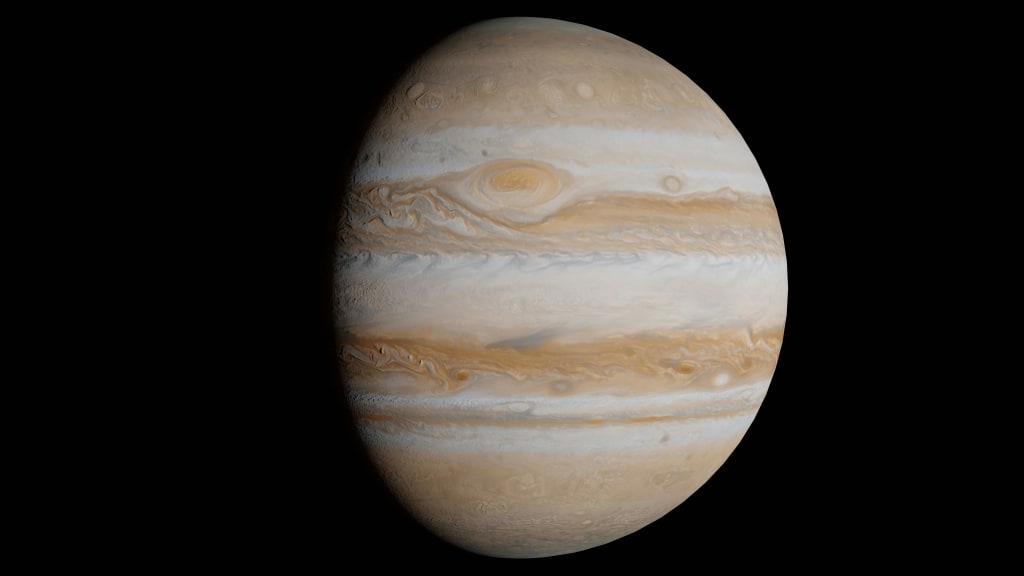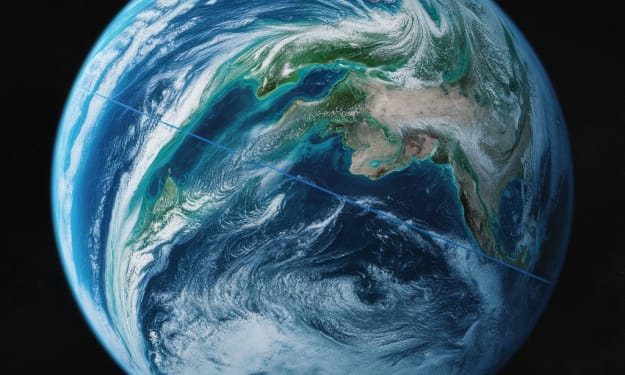What Have Scientists Discovered on Jupiter?
Revelations from the Gas Giant: What Scientists Found

Jupiter is a massive, terrifying planet that has managed to hide some things from us up until this point, including planetary cannibalism and giant spots you've never seen before. We're going to reveal all of Jupiter's dark secrets, despite being studied for centuries and even being visited by nine space probes in the last 50 years. Okay, so you've undoubtedly heard of Jupiter's Great Red Spot, the enormous storm that has been raging for hundreds of years. It's freakishly big wider than Earth, kind of big and if Earth had a storm like that raging on its surface, well, there wouldn't be an Earth as we know it today. However, you may not be aware that there's a new, massive storm in town called the Great Cold Spot. This one is peculiar in that it's almost as large as the Great Red Spot and it's the coldest place in Jupiter's clouds, which is how it got its name. How did we miss this enormous hurricane? I believe we were simply enthralled by the gas giant's swirling clouds and neglected to look closely at Jupiter's poles. The Great Cold Spot is actually difficult to observe because it is hidden by Jupiter's intense auroras, which are similar to Earth's Northern Lights but far more potent. Moreover, unlike the Great Red Spot, which is not likely to alter much, the Great Cold Spot is volatile, constantly changing in size over weeks or even days as scientists struggle to keep up with it, and they still don't fully understand how it formed. I mean we know that the Great Red Spot is powered by Jupiter's swirling gases but the great cold spot could be fueled by auroras and Jupiter's auroras would be a remarkable sight to see they aren't exactly like the ones on Earth we get our space light shows thanks to the sun's solar wind but Jupiter's auroras don't rely much on the Sun they appear thanks to the charged particles inside Jupiter's unimaginably huge magnetosphere most of these particles come from Jupiter's volcanic moon IO if the great cold spot is really formed by auroras then it might be thousands of years old way older than the Great Red Spot and it's not the only mysterious spot lurking in Jupiter's deadly atmosphere among the gas giants beautiful swirling gases there lies a dark Vortex with an intriguing name the great Abyss this is one of the most baffling features scientists discovered on Jupiter and let me remind you we've sent nine probes to this giant from Pioneer 10 the first spacecraft to fly by Jupiter in 1973 to Juno the most recent space probe to do an in-depth study of the planet it took Juno 20 passes to finally notice and capture this dark center of the great Abyss and yet scientists don't know exactly what this pitch black hole is or how it formed I would call it Jupiter's Great black hole but I guess that name would be a little bit confusing besides the great Abyss isn't anything like a black hole it's the very dark center of a vortex might run deep but at least it wouldn't suck you in like a black hole would likely not The gas giant Jupiter has an extremely frightening atmosphere. It is mostly composed of hydrogen and helium, but its clouds are far more dangerous than that. At the top, there is only ammonia ice, and as you go deeper beneath the bright patterns, you will probably come across ammonium hydrosulfide crystals. At the very bottom of the gas giant, there is water ice and vapor. Yes, that's correct. Jupiter is a strange planet without a solid surface. Despite being the largest planet in the solar system and having more mass than all other planets put together, Jupiter is essentially a freezing cold cloud floating in space with a massive hydrogen ocean in its center. There are also winds on Jupiter. Jupiter's winds are incredibly powerful, capable of pushing more material around the planet than three Earths' worth. At the equator, they can reach speeds of up to 540 km/s, and they may even be blowing deep into Jupiter's atmosphere. The magnetic field of Jupiter is off. No other planet in the solar system can match Jupiter's enormous magnetosphere, which is 21 times the planet's diameter. As if that weren't enough, this gas giant has not one, not two, but three magnetic poles: one near the equator, one at the North and South Poles, and one that was only recently discovered by Juno and named the Great Blue Spot. Is it just me, or do you think Jupiter's place names could be a little more creative? scientists have noticed how the gas Giant's magnetic field changes over time and now they think the intense winds might be causing these changes well that's just mind-blowing but you know what's even more stunning than that it turns out Jupiter is a planetary cannibal in the early days of our solar system the gas giant was one of the first planets to form it really explains why it's so gigantic but despite being so gassy Jupiter has a lot of heavy elements inside it and thanks to Juno we now know that this monstrous planet has about 30 Earth's worth of heavy elements in it all because Jupiter is literally gobbling up other planets okay they're not exactly planets more like infinitesimals these are clumps of dust and rock that can be hundreds of kilometers across if Jupiter hadn't eaten them for breakfast well these clumps could have become a new planet like Mars or Earth just imagine what having another rocky planet in the solar system would be like well sure it could have pushed Earth out of the habitable zone or this new planet could have crashed into Earth leaving us without any chance to thrive here but it could also be pretty cool if there was another Earth-like World nearby I wouldn't mind another planet like Kepler-22b wandering around the solar system well put on your spacesuit and jump into the spaceship because that's a story for another what if thank you
About the Creator
Enjoyed the story? Support the Creator.
Subscribe for free to receive all their stories in your feed. You could also pledge your support or give them a one-off tip, letting them know you appreciate their work.






Comments
There are no comments for this story
Be the first to respond and start the conversation.